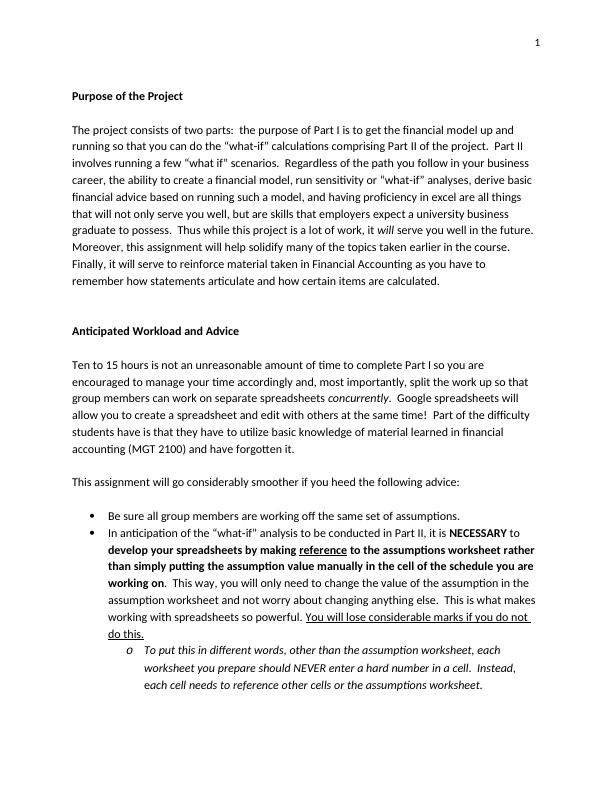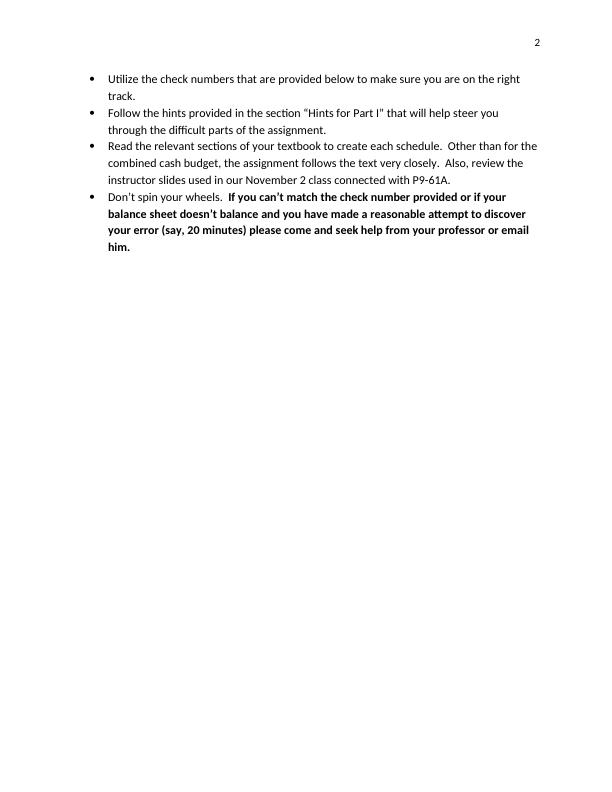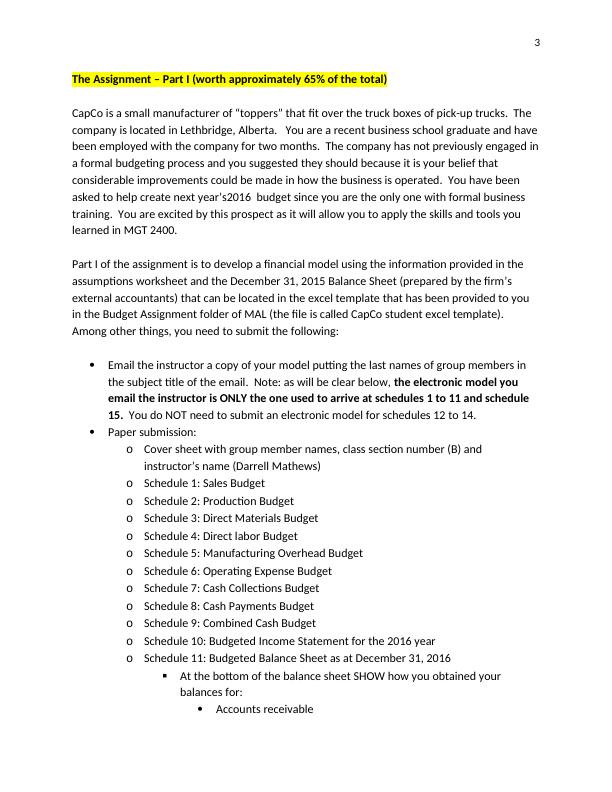Ask a question from expert
Financial Advice Based on Running a Model
8 Pages2828 Words97 Views
Added on 2019-09-16
Financial Advice Based on Running a Model
Added on 2019-09-16
BookmarkShareRelated Documents
1Purpose of the ProjectThe project consists of two parts: the purpose of Part I is to get the financial model up and running so that you can do the “what-if” calculations comprising Part II of the project. Part II involves running a few “what if” scenarios. Regardless of the path you follow in your business career, the ability to create a financial model, run sensitivity or “what-if” analyses, derive basic financial advice based on running such a model, and having proficiency in excel are all things that will not only serve you well, but are skills that employers expect a university business graduate to possess. Thus while this project is a lot of work, it will serve you well in the future. Moreover, this assignment will help solidify many of the topics taken earlier in the course. Finally, it will serve to reinforce material taken in Financial Accounting as you have to remember how statements articulate and how certain items are calculated. Anticipated Workload and AdviceTen to 15 hours is not an unreasonable amount of time to complete Part I so you are encouraged to manage your time accordingly and, most importantly, split the work up so that group members can work on separate spreadsheets concurrently. Google spreadsheets will allow you to create a spreadsheet and edit with others at the same time! Part of the difficulty students have is that they have to utilize basic knowledge of material learned in financial accounting (MGT 2100) and have forgotten it.This assignment will go considerably smoother if you heed the following advice:Be sure all group members are working off the same set of assumptions. In anticipation of the “what-if” analysis to be conducted in Part II, it is NECESSARY to develop your spreadsheets by making reference to the assumptions worksheet rather than simply putting the assumption value manually in the cell of the schedule you are working on. This way, you will only need to change the value of the assumption in the assumption worksheet and not worry about changing anything else. This is what makes working with spreadsheets so powerful. You will lose considerable marks if you do not do this.oTo put this in different words, other than the assumption worksheet, each worksheet you prepare should NEVER enter a hard number in a cell. Instead,each cell needs to reference other cells or the assumptions worksheet.

2Utilize the check numbers that are provided below to make sure you are on the right track.Follow the hints provided in the section “Hints for Part I” that will help steer you through the difficult parts of the assignment.Read the relevant sections of your textbook to create each schedule. Other than for thecombined cash budget, the assignment follows the text very closely. Also, review the instructor slides used in our November 2 class connected with P9-61A. Don’t spin your wheels. If you can’t match the check number provided or if your balance sheet doesn’t balance and you have made a reasonable attempt to discover your error (say, 20 minutes) please come and seek help from your professor or email him.

3The Assignment – Part I (worth approximately 65% of the total)CapCo is a small manufacturer of “toppers” that fit over the truck boxes of pick-up trucks. The company is located in Lethbridge, Alberta. You are a recent business school graduate and havebeen employed with the company for two months. The company has not previously engaged ina formal budgeting process and you suggested they should because it is your belief that considerable improvements could be made in how the business is operated. You have been asked to help create next year’s2016 budget since you are the only one with formal business training. You are excited by this prospect as it will allow you to apply the skills and tools you learned in MGT 2400.Part I of the assignment is to develop a financial model using the information provided in the assumptions worksheet and the December 31, 2015 Balance Sheet (prepared by the firm’s external accountants) that can be located in the excel template that has been provided to you in the Budget Assignment folder of MAL (the file is called CapCo student excel template). Among other things, you need to submit the following:Email the instructor a copy of your model putting the last names of group members in the subject title of the email. Note: as will be clear below, the electronic model you email the instructor is ONLY the one used to arrive at schedules 1 to 11 and schedule 15. You do NOT need to submit an electronic model for schedules 12 to 14.Paper submission:oCover sheet with group member names, class section number (B) and instructor’s name (Darrell Mathews)oSchedule 1: Sales BudgetoSchedule 2: Production BudgetoSchedule 3: Direct Materials BudgetoSchedule 4: Direct labor BudgetoSchedule 5: Manufacturing Overhead BudgetoSchedule 6: Operating Expense BudgetoSchedule 7: Cash Collections BudgetoSchedule 8: Cash Payments BudgetoSchedule 9: Combined Cash BudgetoSchedule 10: Budgeted Income Statement for the 2016 yearoSchedule 11: Budgeted Balance Sheet as at December 31, 2016At the bottom of the balance sheet SHOW how you obtained your balances for:Accounts receivable

End of preview
Want to access all the pages? Upload your documents or become a member.
Related Documents
Combined Cash Budget | Assignmentlg...
|8
|2864
|412
Projected Level of Income and the Factlg...
|5
|1575
|197
Answer of Strategic Sales Planning Form Blg...
|6
|906
|392
TMAN625 The Final Examlg...
|1
|501
|361
CapCo Financial Analysislg...
|6
|1489
|172
Balance Sheet Analysis Assignmentlg...
|6
|1489
|298